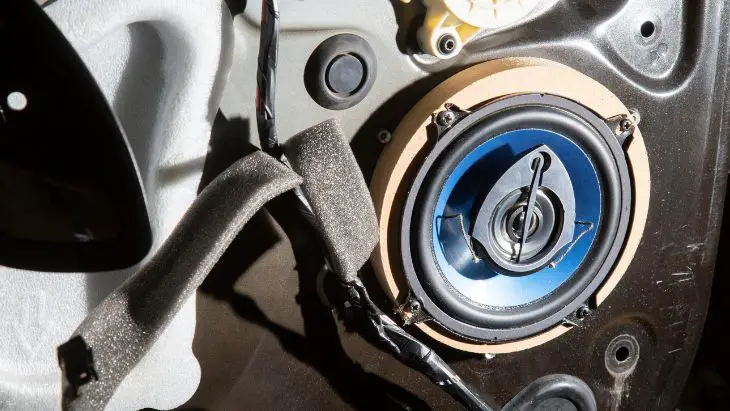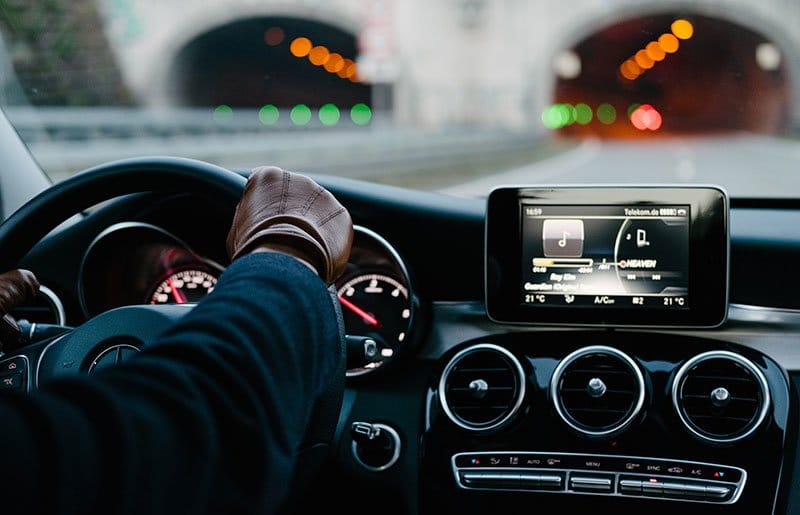Music lovers always want their cars to sound the best. Listening to music while driving is extremely entertaining. However, the challenge comes with building a great sound system in a car. Setting up a sound system in a car is not as easy as doing it in your home. At home, you’ll only need a simple home theater system or a whole house sound system and you’re all set. When it comes to your car, you need to do a lot more work to build a great sound system.
There’re certain considerations you need to make when building a car sound system. You can even invest in the best components and leave out something important and end up getting poor sound quality. Thus, you need to be more informed before assembling everything together. Maybe all you need are simple improvements in your current sound system. Simply read through this guide for some tips on how to build the best sound system for your car.
Determine the kind of sound you want
First and foremost, you need to determine the kind of sound you want in your car. Do you want deep, booming bass? Do you want full-range sound or more highs and mid than lows? Do you want more lows than highs and mids? Asking yourself such questions should be the starting point. Knowing the kind of sound you want will be the main basis for building a car sound system. The best sound system in your car is the one that fulfills your personal preferences. Another car owner’s sound system may not be your best, but it’s the best for them. Thus, you need to know what you want before moving forward.
Establish what is currently lacking
Getting the best audio system in your car doesn’t necessarily mean discarding everything. Maybe you’re only lacking one addition to make the difference. Thus, before shopping for new or extra sound equipment for your car, assess what is lacking. Ask yourself what you feel about your car’s music system by turning it on. If what you hear is dull and flat, then you should consider improving the entire setup. For instance, if your speakers are buzzing and rattling when you tune up the volume and gain higher, then you need more powerful speakers. If you’re turning the volume and gain all the way up and all you’re getting is dull sound, then you need to upgrade your receiver or rather add an amplifier.
Replace your Factory Car Speakers

Car speakers are a major component of a sound system. The kind of speakers you have in your car determine the kind of sound quality you’ll enjoy. Building the best audio system in any car demands having the best speakers. Speakers are responsible for delivering sound throughout the car cabin. Different speakers have different capabilities in sound reproduction. They’re made with different characteristics such that some come with a single driver for reproducing one specific frequency range while others come with multiple drivers to reproduce full-range sound.
If you’re using factory speakers, then you definitely need to replace them with more powerful aftermarket speakers. You’ll have to choose between coaxial and component speakers when replacing your dull speakers. Coaxial speakers come as full-range speakers. The most common coaxial speakers are 2-way and 3-way drivers. You can also find 4-way coaxial speakers. For instance, 2-way coaxial speakers come with a woofer cone and tweeter whereas 3-way systems come with a woofer cone, midrange driver, and a tweeter. 4-way speakers have the same drivers as 3-way speakers but have a fourth driver known as a super tweeter. Coaxial speakers come with an inbuilt crossover to ensure that each driver only receives the frequency range it’s meant to reproduce. Coaxial speakers are ideal when building a simple, full-range sound system. They’re also ideal where space is limited.
On the other hand, component speakers come as individual speaker drivers. You can have a single tweeter driver, a single midrange driver, or a single woofer driver. With component speakers, you install individual speakers depending on the kind of frequency range you want. If you want more lows, you’ll simply go for more woofer drivers. If you want more highs, you’ll concentrate more on adding tweeters. Thus, component speakers are ideal for building a customized sound system. You’ll have the freedom to build the exact type of sound system you want. However, component speakers are not ideal where space is limited. They also require adding a standalone crossover.
Replacing factory speakers or old, worn-out speakers with new aftermarket speakers will improve the quality of sound you get in your car. They will enhance the overall clarity and deliver tighter bass. Moreover, you’ll notice more details about your favorite music tracks. They’re built better than factory speakers. Thus, you’ll be assured of getting a great sound system with aftermarket car speakers.
Adding a Car Subwoofer
Although some speakers deliver decent bass, they may not deliver booming bass. If you want enhanced bass in your car, then you need to add a dedicated subwoofer. Car subwoofers are specially designed to deliver hard-hitting bass that component and coaxial speaker drivers cannot deliver. Thus, if your new speakers can’t deliver the kind of bass you want, then add a subwoofer. You can add multiple subs for deeper bass if space and budget will allow.
However, a powerful subwoofer can consume a lot of power from your car battery, especially when hitting deeper notes. In this case, you might notice that your headlights are dimming when the sub hits deeper notes. Luckily, you can rectify this problem by adding a car audio capacitor. Capacitors usually work by storing and discharging electrical energy rapidly as needed. Thus, they supply on-demand power to amplifiers whenever the subwoofer draws out more power than what the car electric system can deliver. A capacitor ensures that the car battery voltage doesn’t drop such that the headlights will not dim.
While a subwoofer will add booming bass to your car, you can consider putting it in a subwoofer box for more enhanced bass. You can choose between building your own subwoofer box and buying a premade one. Building your own sub-box will give you a chance to customize it the way you want. However, you can choose a premade-made sub-box to avoid the hassle of building it yourself. A sub box can be either ported or fully sealed. The kind of sub-box you’ll choose will depend on the type of subwoofer you have. Some subs are only ideal for ported boxes while others are only ideal for non-ported sub boxes.
Replace the Factory Car Receiver
If you have a factory receiver, then it may not be powerful enough to handle powerful aftermarket speakers and a powerful sub. If you really want to build the best car sound system, then you should invest in a more powerful aftermarket car receiver. Aftermarket receivers come with great features that make them more useful than factory receivers. With a high-quality and powerful aftermarket receiver, you’ll be able to drive powerful speakers and a sub.
Regardless of the kind of sound components you have in your car, without a good receiver, sound signals won’t be of the best quality. A modern aftermarket head unit will come with extra features such as audio streaming from smartphones via Bluetooth, playing DVDs, multimedia streaming through USB drives, touchscreen control, GPS navigation, HD radio, and more. Moreover, aftermarket receivers can place all common audio and video formats.
A high-quality head unit will also deliver cleaner sound to the speakers and amplifier. You can get a head unit that has a preamplifier. The preamp cleans audio signals being sent to the amplifier and speakers. As such, you’ll get enhanced sound clarity.
Adding a Car Amplifier
Although most aftermarket head units come with an inbuilt amp, they may not be powerful enough to drive powerful speakers and amps. For instance, component speakers often demand more power and such power can only be delivered by a standalone amp. An amp will boost sound signals such that they’ll be powerful enough to drive multiple speakers and subwoofers. The kind of car amp you’ll choose should depend on the number of speakers and their power. Car amps come in different configurations. Their configurations are mainly based on the number of channels they have. Some have a mono-channel while others have as many as 6 channels. If you have multiple speakers and subwoofers, then consider an amp with more channels.
Select high-quality Music Files

Now that you’ve invested in great speakers, the kind of music files you play will significantly affect the kind of sound you hear in your car. While compressed music files may sound just okay when listening to them using headphones, they may not sound as good when playing them through your car stereo. Compressed music files lose some low and high-frequency details. Highs may become distorted whereas lows may sound muted and muffled. This happens since compressed music files are saved at low bit rates. A good sound system in your car will surely tell you that there’s something wrong with how your music files sound. For the best sound, use original music files without compressing them. You’d rather invest in storage devices with higher storage capacity and enjoy listening to high-quality, uncompressed music files rather than having tons of poor, sounding music files.
Add an Equalizer
Poor speaker placement can affect the kind of sound you’ll get as it interferes with the frequency response. A car cabin also affects the frequency response. Frequency response peaks can lead to ear-piercing highs and extremely boomy bass. Such issues can lead to ear fatigue. To solve this problem, you need to add an equalizer. While most aftermarket receivers come with treble, mid, and bass controls, they’ll not help much in eliminating unwanted frequency response peaks. A separate equalizer has the ability to adjust the frequency response such that you can eliminate unwanted peaks.
Add sound-deadening material
Car cabins present several problems to a car sound system. Window and cabin surfaces vibrate while playing loud, deep music. Absorbent materials such as the carpet and seat covers soak up most of the sound. All these cabin issues affect the sound you’ll get. Also, car vibrations, engine noise, and road noise interfere with a car sound system. If you want to build the best sound system, then you need to deal with these problems by adding sound-deadening material. For instance, powerful car speakers installed on doors make the door panel vibrate. The vibrations affect sound accuracy. Adding sound deadening material to the door panels will eliminate the vibrations by acting as a baffle. Also, install sound deadening material on the floor and trunk to eliminate engine and road noise.
Conclusion
It’s quite possible to make your car sound system more appealing than ever before. All you need to do is to invest in what your car is currently lacking. Forget those worn-out, factory car speakers and receivers and invest in high-quality aftermarket sound equipment. Replace the factory speakers with new aftermarket speakers for high-quality sound. Add a car subwoofer for deeper bass. Include an amplifier to feed the speakers with enough power. Remember to tune everything the right way for the best sound. For instance, ensure the controls on your car equalizer and amplifier are properly set. Also, avoid turning the volume and gain to their maximum as this can cause distortion. Simply keep these tips on how to build the best sound system for your car in mind and transform your car music experience to a whole new level.
Michael Evanchuk is a San Francisco-based sound engineer with 20 years’ experience installing, troubleshooting, and repairing commercial, automotive, and household sound equipment. Evanchuk owns an auto stereo center, where he offers highly competitive car audio installation and repair services. He has written dozens of articles on different sound engineering topics, all of which have been published in leading journals, blogs, and websites.






